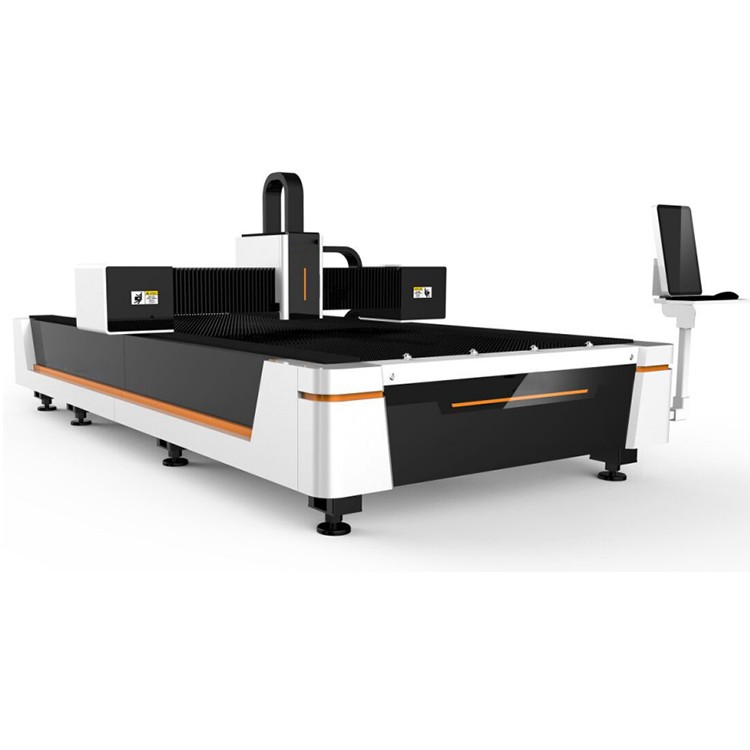

We are a professional laser cutting machine manufacturer with over 10 years of industry experience. Today, we would like to introduce the working principle of laser cutting machine to you:

Laser cutting technology, as an important processing means in modern manufacturing, is centered on the conversion of high energy density laser beams into precise cutting capabilities. This type of processing realizes precision cutting of various materials through the synergy of optical system, mechanical structure and control system.
The workflow of a laser cutting machine begins with the energy conversion of the laser. Inside the laser, a specific medium (e.g., carbon dioxide gas, optical fiber, or crystal) is excited by external energy, resulting in the phenomenon of stimulated radiation. This physical process results in a proliferation of photons, creating a high-intensity laser beam. The generated laser light is guided through a reflector into the beam delivery system and finally reaches the focusing device.
The beam delivery system is the key link in laser conduction. For CO2 lasers, lens-reflective conduction is usually used, where the beam path is altered by precisely arranged mirrors. Fiber lasers, on the other hand, make use of flexible fiber conduction, where the beam is fully reflected inside the fiber. During transmission, the beam diameter is stabilized and energy loss is kept low. Some units are equipped with beam alignment devices to ensure the accuracy of the transmission path.
The focusing link determines the final cutting effect. After the laser beam passes through the focusing lens, the beam diameter is drastically reduced, forming a high-energy spot with a diameter of 0.1-0.3 mm at the focal point. The focus position is adjusted to the material thickness and is usually located at or slightly below the surface of the workpiece. The laser power density after focusing can reach millions of watts per square centimeter, a value sufficient to vaporize most metallic materials instantaneously.
The material interaction phase is at the heart of the cutting realization. When a high-energy laser beam strikes the surface of a material, the energy is absorbed and converted into thermal energy. Metallic materials rely mainly on free electrons to absorb photon energy, while non-metallic materials absorb energy through molecular vibrations. As the temperature rises dramatically, the material undergoes a process of melting and vaporization. Auxiliary gases are simultaneously applied to the cutting area to blow away the molten material and prevent oxidation of the cut. Oxygen, nitrogen or compressed air are used as auxiliary gases for different materials.
The motion control system ensures the accuracy of the cutting path. Modern laser cutting machine adopts CNC system to command the servo motor, driving the cutting head or table to move according to the predetermined trajectory. The motion accuracy can reach ±0.05mm, and the repeat positioning accuracy is higher. The control system synchronizes the adjustment of laser power, pulse frequency and other parameters to adapt to the cutting needs of different geometries such as straight lines and curves.
There are differences in the cutting mechanism of different materials. Metallic materials mainly rely on laser melting and auxiliary gas blowing off to complete the cut, and the cut surface shows neat stripes. Non-metallic materials such as acrylic, wood, etc. are mainly separated directly by laser vaporization, and the cutting edges are usually smoother. For highly reflective materials such as copper, aluminum, etc., special pulse waveforms are required to prevent energy reflection from damaging the optics.
The protection system of the laser cutting machine ensures safe operation. The water cooling system maintains the normal working temperature of the laser and optical components, and the exhaust device promptly removes the smoke and dust generated by cutting. The sealing design of the optical path prevents the laser from leaking out, and the safety interlocking device immediately cuts off the laser output in case of abnormality. These measures work together to ensure the stable operation of the equipment and the safety of the operators.
Developments in laser cutting technology continue to improve processing capabilities. Higher-power lasers increase cutting thickness, more sophisticated control systems improve cutting quality, and intelligent process databases simplify operation. These advances make laser cutting in industrial manufacturing applications continue to expand, becoming an indispensable technical means in the field of modern processing.
From energy conversion to material separation, the laser cutting machine realizes efficient and precise material processing through the precise cooperation of multiple systems. This non-contact processing method has advantages that are difficult to compare with traditional mechanical cutting, and plays an increasingly important role in the transformation and upgrading process of the manufacturing industry. With the continuous development of technology, laser cutting will continue to promote the innovation of processing technology.
If you are interested in laser cutting machine, please contact us.
 Address:Room 1202, Detaitang Building, No. 118 Huaguang Road, Zhangdian District, Zibo, Shandong
Address:Room 1202, Detaitang Building, No. 118 Huaguang Road, Zhangdian District, Zibo, Shandong WhatsApp:+8615653328535
WhatsApp:+8615653328535 Wechat: +8615965331535
Wechat: +8615965331535  E-mail:zs@sdsmachinery.com
E-mail:zs@sdsmachinery.com